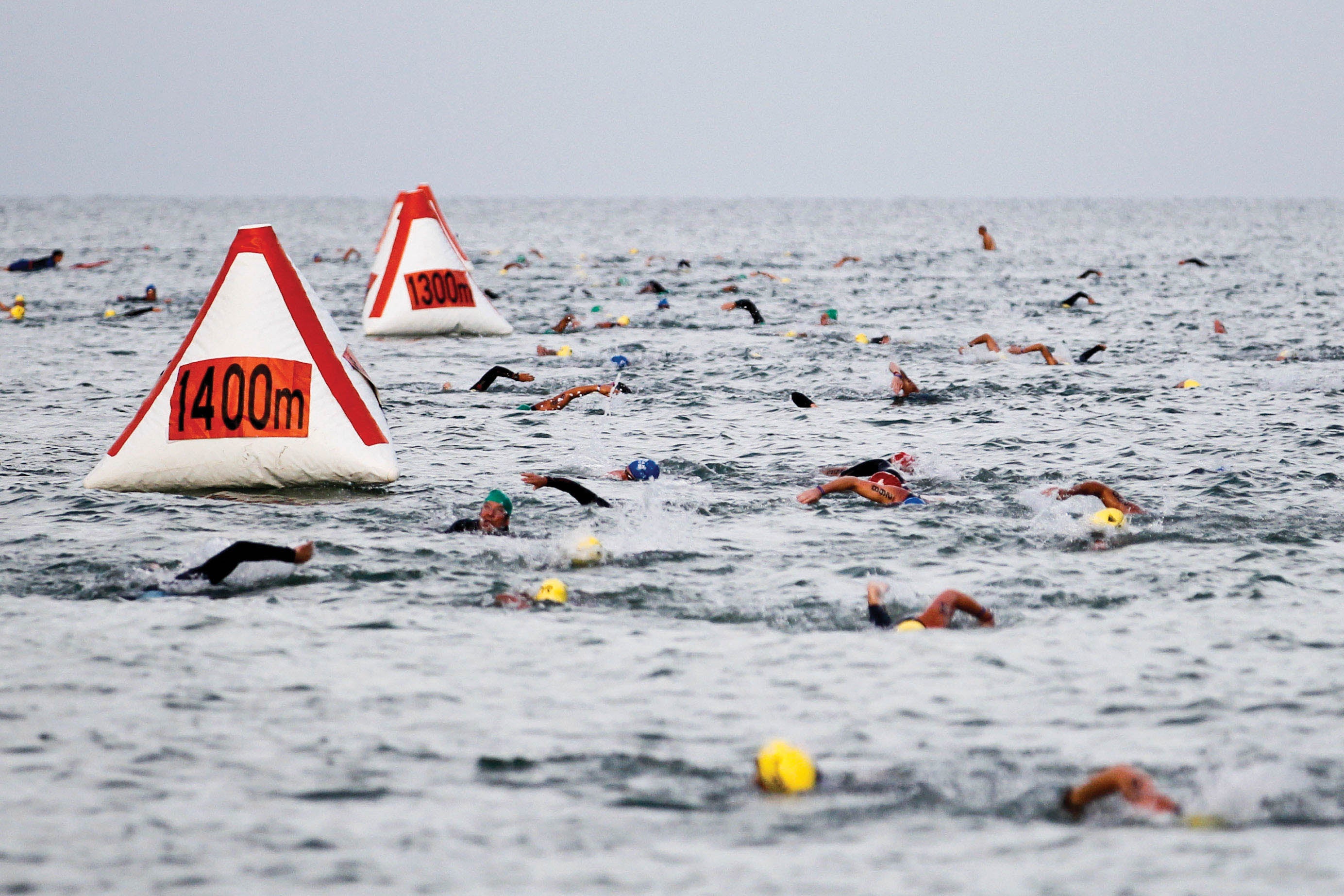Triathlon Organizers Aim To Make Swim Safer

Large, bright numbered buoys at the TriRock Series races help keep swimmers on course and chart their progress, and they improve the safety teams’ communications. Photo: Eve Edelheit
Event organizers are becoming increasingly proactive in creating a safer swim leg for racers.
Over the past year, race directors have made some significant changes to ensure triathletes have a safe swim. Here are some of the changes that may affect your race.
• The TriRock series, owned by Triathlete’s parent company, Competitor Group Inc., marks its swim courses every 100 meters with huge, bright buoys to help course navigation as well as communication with the safety teams. The race series also hosts on-course swim clinics at most of its events, and uses a time-trial start at its biggest races.
• Ironman’s Swim-Smart initiative rolled out in May 2013, replacing its mass swim starts with rolling or wave starts at many of WTC’s events. Ironman also created designated swim warm-up areas for athletes to acclimate, check equipment and raise their heart rates. In an interview with Triathlete.com, WTC CEO Andrew Messick said there was a higher swim finishing rate at the events where SwimSmart was implemented.
• Rev3 focused a lot on educating its swim safety team, recruiting open-water professionals over pool lifeguards and enhancing the training for all of the swim staff. The race series started offering swim clinics led by pro triathletes to go over race-day tactics.
• Escape From Alcatraz features one of the sport’s iconic yet most challenging swim legs, which is why the race pre-screens and scrutinizes applicants who enter its lottery—looking for athletes who have done at least three Olympic-distance races before tackling Alcatraz. Also, the race has a 25:1 ratio of swimmers to lifeguards, an increase in the past three years.
RELATED – Rookie In Training: A Unique Swim Course At Nation’s Tri